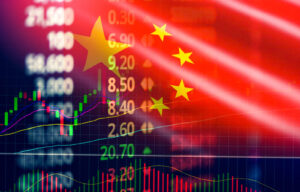
The U.S. stock market in 2023 has defied many predictions, with both the S&P 500 and the Nasdaq Composite reaching record highs. The S&P 500 has seen almost a 20% return, while the Nasdaq Composite boasts over 30% year-to-date. Could this be enough to combat the historical September slump?
Several factors are fueling this bullish trend, including strong corporate earnings and positive indicators from the economy. These elements have pushed the indices to their current peaks. Yet, with September’s historical volatility, is a downturn imminent?
September is known for market volatility and potential slumps. However, this article will argue against the norm, presenting three reasons why 2023 might be an exception. The current momentum, market dynamics, and a possible shift in investor sentiment could redefine the September slump reputation.
The Federal Reserve will hold interest rates steady

In case you had not been watching, markets ended a volatile week on Friday. The Nasdaq Composite ended the week up 1.2%, while the S&P 500 slid down 0.2%. The reason? Another round of economic data and market anxiety around the U.S. Federal Reserve’s next meeting was able to, again, sour investor sentiment.
In particular, on Wednesday morning, the U.S. Department of Labor Statistics released the August Consumer Price Index (CPI) report, which offered mixed data. Headline inflation, which includes spikes in food and energy prices, rose 3.7% Y/Y, slightly hotter than economists’ expectations of a 3.6% Y/Y increase. Core inflation, which is the figure Federal Reserve officials focus on, slowed to 4.3% Y/Y but clocked in its largest month-to-month increase since February at 0.3%.
Although equities markets appeared to shrug off the unimpressive CPI report, the data seemed to have made traders more anxious as the week continued. Still, during the Federal Reserve meeting this Wednesday, officials are likely to hold rates steady. Although this does not suggest interest rates have peaked, there will be another couple of months of economic data to sift through before the Fed makes its rate decision in November, which could render August’s higher-than-expected inflation figures irrelevant by the next Fed meeting. This is one piece of evidence against the curse of the September slump.
A list of blockbuster IPOs will keep markets frothy

The United States’ initial public offering market essentially halted in 2022 after a record year of listings in the year prior. Given the way equities markets went last year, management teams were making a pragmatic decision to shelf IPO plans. 2023 has been a much different year. Equities have rebounded in a surprising way, paving the way for some blockbuster IPOs.
As an example, the Softbank-backed chip designer, Arm Holdings (NASDAQ:ARM) dominated headlines last week due to investors and market-watchers alike anticipating the semiconductor company’s U.S. initial public offering. On Thursday, Arm’s shares skyrocketed around 25% on the company’s trading debut, and the semiconductor company’s IPO has marked a return to form for both Softbank and the United States IPO market in general.
Arm Holding’s surge led the Nasdaq to have a positive week overall, while the other major indices lagged behind. Instacart, the online grocery delivery service, is also aiming for a large IPO and even raised its initial price range after Arm’s successful listing. Other IPOs planned for September are those of marketing automation firm Klaviyo and biotechnology firm Neumora. If successful, these public trading debuts can help shift equities and avoid the typical September slump.
Encouraging economic data from China will shore up investor confidence
It seems China’s economy has made headlines for only negative reasons in 2023 since the world’s second-largest economy has been struggling with a sluggish economic rebound. However, recent economic data point to glimmers of hope for the country’s economy as well as global equities.
As revealed more than a couple of weeks ago, consumer price data released by the government revealed China’s economy slipped out of deflationary territory in August as the CPI rose 0.1%. Furthermore, producer prices, although falling, eased their descent. Last week, the government released data on industrial production and retail sales, which blew past analysts’ expectations, indicating the economy is most likely past its previously reached low point. Though a single month of data is surely not the end all be all of China’s race to get its economy back on track, the data itself is indeed encouraging and suggests the Communist Party of China’s (CPC) fine-tuning of policy measures is working to stabilize economic activity.
The property sector still maintains a gloomy outlook, but as I have written prior, I believe the steps the government made in this regard were necessary in attempting to reorient the economy away from the asset bubble-inducing real estate sector. We will only understand in the long run if these policy measures will be successful. Still, if official economic figures and alternative data, such as subway ridership and commodities prices, continue to show that parts of the world’s second-largest economy are coming back to life, equities are likely to benefit.
On the date of publication, Tyrik Torres did not have (either directly or indirectly) any positions in the securities mentioned in this article. The opinions expressed in this article are those of the writer, subject to the InvestorPlace.com Publishing Guidelines.




